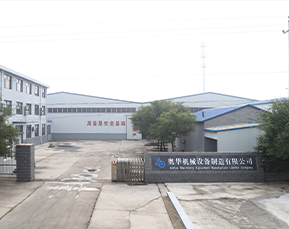 Afrikaans
Afrikaans  Albanian
Albanian  Amharic
Amharic  Arabic
Arabic  Armenian
Armenian  Azerbaijani
Azerbaijani  Basque
Basque  Belarusian
Belarusian  Bengali
Bengali  Bosnian
Bosnian  Bulgarian
Bulgarian  Catalan
Catalan  Cebuano
Cebuano  Corsican
Corsican  Croatian
Croatian  Czech
Czech  Danish
Danish  Dutch
Dutch  English
English  Esperanto
Esperanto  Estonian
Estonian  Finnish
Finnish  French
French  Frisian
Frisian  Galician
Galician  Georgian
Georgian  German
German  Greek
Greek  Gujarati
Gujarati  Haitian Creole
Haitian Creole  hausa
hausa  hawaiian
hawaiian  Hebrew
Hebrew  Hindi
Hindi  Miao
Miao  Hungarian
Hungarian  Icelandic
Icelandic  igbo
igbo  Indonesian
Indonesian  irish
irish  Italian
Italian  Japanese
Japanese  Javanese
Javanese  Kannada
Kannada  kazakh
kazakh  Khmer
Khmer  Rwandese
Rwandese  Korean
Korean  Kurdish
Kurdish  Kyrgyz
Kyrgyz  Lao
Lao  Latin
Latin  Latvian
Latvian  Lithuanian
Lithuanian  Luxembourgish
Luxembourgish  Macedonian
Macedonian  Malgashi
Malgashi  Malay
Malay  Malayalam
Malayalam  Maltese
Maltese  Maori
Maori  Marathi
Marathi  Mongolian
Mongolian  Myanmar
Myanmar  Nepali
Nepali  Norwegian
Norwegian  Norwegian
Norwegian  Occitan
Occitan  Pashto
Pashto  Persian
Persian  Polish
Polish  Portuguese
Portuguese  Punjabi
Punjabi  Romanian
Romanian  Russian
Russian  Samoan
Samoan  Scottish Gaelic
Scottish Gaelic  Serbian
Serbian  Sesotho
Sesotho  Shona
Shona  Sindhi
Sindhi  Sinhala
Sinhala  Slovak
Slovak  Slovenian
Slovenian  Somali
Somali  Spanish
Spanish  Sundanese
Sundanese  Swahili
Swahili  Swedish
Swedish  Tagalog
Tagalog  Tajik
Tajik  Tamil
Tamil  Tatar
Tatar  Telugu
Telugu  Thai
Thai  Turkish
Turkish  Turkmen
Turkmen  Ukrainian
Ukrainian  Urdu
Urdu  Uighur
Uighur  Uzbek
Uzbek  Vietnamese
Vietnamese  Welsh
Welsh  Bantu
Bantu  Yiddish
Yiddish  Yoruba
Yoruba  Zulu
Zulu conveyor brackets
Understanding Conveyor Brackets Essential Components for Efficient Material Handling
Conveyor systems have become a cornerstone of modern industry, providing efficient solutions for the movement of goods in various settings, from manufacturing plants to warehouses. At the heart of these systems lies a myriad of components that work in tandem to ensure smooth operation, among which conveyor brackets play a crucial role. This article explores the function, types, and significance of conveyor brackets in material handling systems.
What Are Conveyor Brackets?
Conveyor brackets are structural components used to support and secure conveyor belts and their associated elements. These brackets are typically made from durable materials such as steel or heavy-duty plastic to withstand the rigors of industrial environments. Their primary function is to hold the conveyor system in place, ensuring that the belts remain aligned and that the materials being transported do not fall off or become misaligned.
Types of Conveyor Brackets
There are several types of conveyor brackets, each designed for specific applications and conveyor configurations
1. Mounting Brackets These brackets attach the conveyor to the floor or wall, providing stability. They come in various designs, including L-brackets and U-brackets, tailored to the weight and design of the conveyor system.
2. Cross Brackets Positioned across the width of a conveyor, cross brackets provide additional support and stability, preventing sagging or bending under heavy loads.
3. Guide Brackets These help in keeping the conveyor belt aligned during operation. They are crucial for preventing belt drift, which can lead to wear and inefficiencies.
4. Tensioning Brackets Used in belt drives, these brackets allow for the adjustment of belt tension, which is essential for the optimal functioning of the conveyor.
conveyor brackets

5. Support Brackets Supporting various components like rollers and motors, these brackets ensure that everything remains securely in place, contributing to the overall integrity of the conveyor system.
The Importance of Conveyor Brackets
The significance of conveyor brackets cannot be overstated. Properly designed and installed brackets enhance the reliability and efficiency of conveyor systems. Here are a few reasons why they are essential
1. Safety By securing the conveyor in place, brackets help prevent accidents caused by misaligned or unstable systems. This is paramount in industries where heavy loads are transported.
2. Durability High-quality brackets reduce wear and tear on the conveyor system itself, prolonging its lifespan and reducing the need for frequent maintenance.
3. Efficiency Well-aligned conveyor systems reduce friction and energy consumption. This efficiency translates to cost savings for businesses, as they can transport goods more effectively with lower energy inputs.
4. Flexibility Various designs of conveyor brackets allow for customization of conveyor layouts, adapting to different operational needs and facility layouts. This versatility is crucial for accommodating different types of materials and workloads.
Conclusion
In conclusion, conveyor brackets are vital components that underpin the functionality of conveyor systems. Their diverse types cater to various operational needs, ensuring safety, durability, and efficiency. For industries reliant on the swift and safe transportation of goods, investing in high-quality conveyor brackets is not merely an option but a necessity. As technology advances and the demand for efficient material handling solutions grows, the role of these brackets will only become more significant. By understanding and utilizing the right conveyor brackets, businesses can optimize their operations, reduce downtime, and enhance overall productivity.
-
Trusted Conveyor Solutions from Leading Conveyor Idler Roller ManufacturersNewsJun.27,2025
-
Reliable Return Idler Solutions for Efficient Belt Conveyor SystemsNewsJun.27,2025
-
Precision Conveyor Accessories for Streamlined Material HandlingNewsJun.27,2025
-
High-Quality Belt Conveyor Idler Solutions for Efficient Material HandlingNewsJun.27,2025
-
High-Performance Belt Conveyor Pulleys for Reliable Material HandlingNewsJun.27,2025
-
Enhancing Material Handling EfficiencyNewsJun.27,2025





























